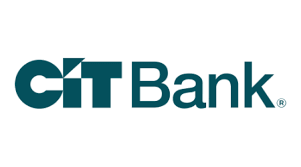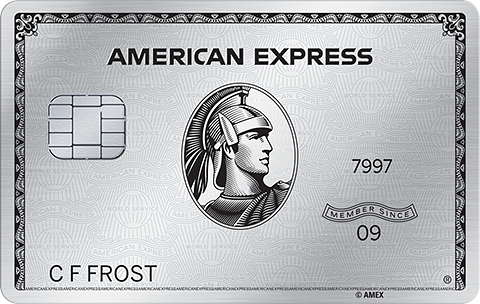Earn up to 5% APY in a High-Yield Savings Account Today, April 26, 2025

KEY POINTS
- The top high-yield savings account rate now: 5.00% APY.
- Let your money work harder for you with one of today's best HYSA rates.
- Open your account from the comfort of home and manage it from a mobile app or computer.
The best available interest rates on high-yield savings accounts are holding steady around 4.50% to 5.00% for now. But with the Federal Reserve signaling rate cuts in the coming months, the window to earn a competitive return on your cash might be closing.
Whether you're preparing your finances for an emergency or simply stashing extra cash for future plans and getaways, locking in one of today's top yields could help you stay ahead of current market inflation and uncertainty.
We check out high-yield savings rates every day from dozens of the top banks to be sure we're sharing only the best options. Today's top offers are below.
| Bank Account | APY | Minimum Account Balance |
|---|---|---|
| Varo Savings | up to 5.00% | Max APY on up to $5,000, 2.50% APY after |
| Axos ONE® | up to 4.51% | $1,500 |
| Pibank Savings | 4.60% | $0 |
| Peak Bank Envision High Yield Savings | up to 4.54% | $100 to open, 2.02% APY on balances of $10,000,000 and above |
| Presidential Bank Advantage Savings | up to 4.50% | $5,000 to open. Must maintain an Advantage Checking Account to be eligible for top APY. |
Why we chose these high-yield savings accounts
- Attractive returns. Enjoy some of the top APYs available to boost your savings quickly.
- Easy start. Some accounts require little or no deposit to open and begin earning interest.
- Digital convenience. Open and manage these accounts fully online from your phone or computer.
- Nationwide access. No need to join a credit union or meet membership requirements.
If you're not earning more than 4.00% APY on your savings, it might be time to switch. Rates have been mostly flat since the end of 2024, but several online banks are leading the pack without requiring huge balances. We like Barclays Tiered Savings account because it pays 3.90% with no account minimums. Pro tip: Be careful with teaser rates that drop after a few months. Always check the fine print. Click here to open a Barclays Tiered Savings account today.
Our Picks for the Best High-Yield Savings Accounts of 2025
| Account | APY | Bonus | Next Steps |
|---|---|---|---|

Open Account for SoFi Checking and Savings
On SoFi's Secure Website.
4.90/5
Our ratings are based on a 5 star scale.
5 stars equals Best.
4 stars equals Excellent.
3 stars equals Good.
2 stars equals Fair.
1 star equals Poor.
We want your money to work harder for you. Which is why our ratings are biased toward offers that deliver versatility while cutting out-of-pocket costs.
|
up to 4.30%
Rate info
Earn up to 4.30% Annual Percentage Yield (APY) on SoFi Savings with a 0.70% APY Boost (added to the 3.60% APY as of 11/12/25) for up to 6 months. Open a new SoFi Checking & Savings account and enroll in SoFi Plus by 1/31/26. Rates variable, subject to change. Terms apply at sofi.com/banking#2. SoFi Bank, N.A. Member FDIC.
Min. to earn: $0
|
Earn up to $300 and +0.70% Boost on Savings APY with direct deposit. Terms apply.
Earn up to 4.30% Annual Percentage Yield (APY) on SoFi Savings with a 0.70% APY Boost (added to the 3.60% APY as of 11/12/25) for up to 6 months. Open a new SoFi Checking & Savings account and enroll in SoFi Plus by 1/31/26. Rates variable, subject to change. Terms apply at sofi.com/banking#2. SoFi Bank, N.A. Member FDIC.
|
Open Account for SoFi Checking and Savings
On SoFi's Secure Website. |

Open Account for CIT Platinum Savings
On CIT's Secure Website.
4.60/5
Our ratings are based on a 5 star scale.
5 stars equals Best.
4 stars equals Excellent.
3 stars equals Good.
2 stars equals Fair.
1 star equals Poor.
We want your money to work harder for you. Which is why our ratings are biased toward offers that deliver versatility while cutting out-of-pocket costs.
|
3.85%
Rate info
3.85% APY for balances of $5,000 or more; otherwise, 0.25% APY
Min. to earn: $5,000
|
Earn a bonus of up to $300 after a one-time deposit of $25,000+
This limited-time offer to qualify for a $225 cash bonus with a minimum deposit of $25,000 or a $300 bonus with a minimum deposit of $50,000 is available to New and Existing Customers who meet the Platinum Savings promotion criteria. The Promotion begins on September 23, 2025, and can end at any time without notice. Customers will receive a $225 or a $300 bonus provided that the program requirements are met. Click here to see promotion details and terms: https://www.cit.com/cit-bank/platinum-savings/PS2025
|
Open Account for CIT Platinum Savings
On CIT's Secure Website. |

Open Account for Western Alliance Bank High-Yield Savings Premier
On Western Alliance Bank's Secure Website.
4.40/5
Our ratings are based on a 5 star scale.
5 stars equals Best.
4 stars equals Excellent.
3 stars equals Good.
2 stars equals Fair.
1 star equals Poor.
We want your money to work harder for you. Which is why our ratings are biased toward offers that deliver versatility while cutting out-of-pocket costs.
|
4.05%
Rate info
The annual percentage yield (APY) is accurate as of November 6, 2025 and subject to change at the Bank’s discretion. Refer to product’s website for latest APY rate. Minimum deposit required to open an account is $500 and a minimum balance of $0.01 is required to earn the advertised APY.
Min. to earn: $500 to open, $0.01 for max APY
|
N/A
|
Open Account for Western Alliance Bank High-Yield Savings Premier
On Western Alliance Bank's Secure Website. |
Platinum Savings is a tiered interest rate account. Interest is paid on the entire account balance based on the interest rate and APY in effect that day for the balance tier associated with the end-of-day account balance. *APYs — Annual Percentage Yields are accurate as of September 23, 2025: 0.25% APY on balances of $0.01 to $4,999.99; 3.85% APY on balances of $5,000.00 or more. Interest Rates for the Platinum Savings account are variable and may change at any time without notice. The minimum to open a Platinum Savings account is $100.
Based on comparison to the national average Annual Percentage Yield (APY) on savings accounts as published in the FDIC National Rates and Rate Caps, accurate as of September 15, 2025.
For complete list of account details and fees, see our Personal Account disclosures.
The annual percentage yield (APY) is accurate as of November 6, 2025 and subject to change at the Bank’s discretion. Refer to product’s website for latest APY rate. Minimum deposit required to open an account is $500 and a minimum balance of $0.01 is required to earn the advertised APY.
Accurate as of the time of publication. The national average rate referenced is from the FDIC's published National Rates and Rate Caps for Savings deposit products, accurate as of October 20, 2025. See the website for more information.
At Motley Fool Money, we rate savings accounts on a five-star scale, shown in tenths of a point to highlight even small differences between products. Accounts are evaluated across four main criteria:
- APY
- Brand and reputation
- Fees and minimum requirements
- Accessibility and features
Scores may be adjusted to reward limited-time high rates or penalize accounts with excessive fees. Our goal is to highlight accounts that are competitive, easy to use, and backed by trusted institutions. Learn more about how Motley Fool Money rates bank accounts.
At Motley Fool Money, we rate savings accounts on a five-star scale, shown in tenths of a point to highlight even small differences between products. Accounts are evaluated across four main criteria:
- APY
- Brand and reputation
- Fees and minimum requirements
- Accessibility and features
Scores may be adjusted to reward limited-time high rates or penalize accounts with excessive fees. Our goal is to highlight accounts that are competitive, easy to use, and backed by trusted institutions. Learn more about how Motley Fool Money rates bank accounts.
Should you open a high-yield savings account?
Thinking about where to stash your cash safely? High-yield savings accounts could be exactly what you need. They provide higher interest rates compared to typical savings accounts, allowing your money to grow.
The ease of accessing your funds whenever you need them is one big advantage of these accounts. Additionally, HYSAs are backed by federal insurance, adding an extra layer of protection.
It can be a comfort during unpredictable times to know that your money is secure. While the Federal Reserve might adjust rates occasionally (and will likely lower them soon), high-yield savings accounts continue to be a wise option for maximizing earnings. Click here to compare the best high-yield savings accounts and open one today.
How to open a high-yield savings account
Getting started with a high-yield savings account is easy and usually takes just a few minutes. Follow these simple steps:
- Compare accounts. Look for the best APY, but also consider fees, ease of access, and minimum balance rules.
- Apply online. Most accounts can be opened from your phone or computer -- no paperwork required.
- Fund your account. Link an existing checking or savings account and transfer your money.
- Set up recurring deposits (optional). Some accounts offer higher APYs when you make regular monthly contributions.
- Track your balance and earnings. Interest usually compounds daily and is paid monthly, helping your savings grow faster over time.
Prefer an account with no monthly deposit requirements?
Some high-yield savings accounts give you great rates without any catches. You don't need to make regular deposits, keep a minimum balance, or worry about monthly fees. If you want something easy, . It offers a 3.40% APY, and you don't need a minimum deposit to open the account.
-
Sources
FAQs
-
Yes. Now is a great time to open a high-yield savings account and take advantage of competitive rates up to 5.00% APY. HYSAs not only help your money grow faster compared to low-yield, but also offer flexibility and access to your cash when you need it. Plus, managing your account is simple from mobile and online apps.
-
It's possible savings account rates could increase in 2025. Rate hikes depend on the Federal Reserve's actions and economic shifts. If inflation rises, banks may boost rates to attract deposits. However, at this time, experts expect that rates will decrease before the end of the year.
-
The biggest downside of a high-yield savings account is that interest rates can fluctuate. Unlike the fixed rates of CDs, the interest rate on savings accounts can change based on market conditions, potentially reducing your earnings over time. This variability means your returns might not be as predictable as with other fixed-rate investments.
Our Research Expert


